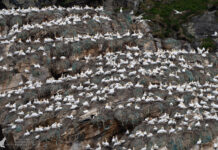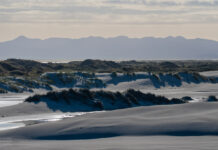Mexico. At first it was a dream. Then it became a little adventure. Now it has become a lasting memory. One that I will never forget for the rest of my life: My first encounter with a whale shark. In the Baja California, these peaceful giants captivated me and made my dream come true. In my following article you will learn everything you need to know about snorkeling with the whale sharks off La Paz. When, where and with which supplier? What is there to consider for the welfare of the animals?
Unassigned, unpaid advertising. The article contains affiliate links*.
Content
My first Whale Shark - a lasting Memory
The Whale Shark - Whale or Shark?
Endangerment and Protection of the Whale Sharks
Snorkeling with Whale Sharks off La Paz - Overview and Tips
Rules for Snorkeling with Whale Sharks off La Paz
Other Places where you can see Whale Sharks
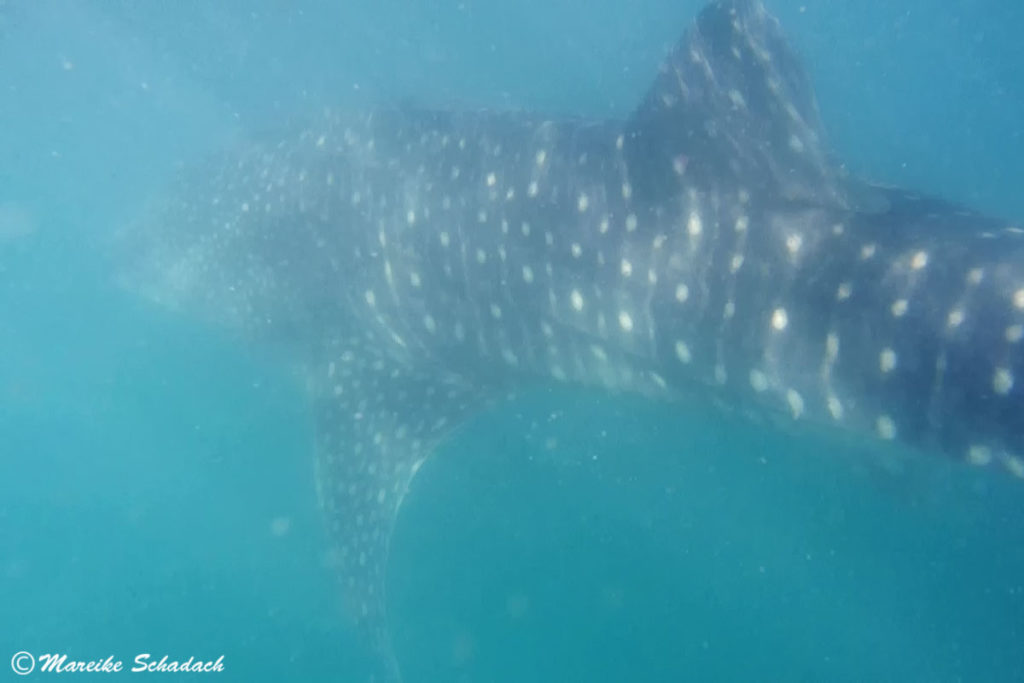
My first Whale Shark - a lasting Memory
Carefully I glide from the side of the ship into the water. At first sight the visibility under the water surface is zero. Then I recognize several bright spots in front of me. Probably small fish. Seeking advice I look to the left to our guide to find out in which direction I should swim. "It's right in front of you..." Unbelievingly I turn my gaze back into the water. In front of my eyes the bright spots from before form a pattern. I recognize outlines and the outlines become fins. The whale shark swims almost vertically in front of me in the water. Eating it opens and closes its mouth. It turns and comes slowly towards me. My small underwater camera is already running and captures this moment. My first encounter with one of these fascinating giants is accompanied by a surprised, gurgling sound.
We were lucky. Because on this day there were 15 animals in the snorkeling zone. As there was a lot of plankton in the water, the whale sharks were busy eating. Then they often stand almost vertically in the water and only move forward slowly feeding. Two days later I went snorkeling again. There the situation was different. The water was a bit clearer but there were fewer whale sharks to be seen. The animals we saw were eating while swimming. Even though they were not swimming very fast, it became more sportive for me as a snorkeler.
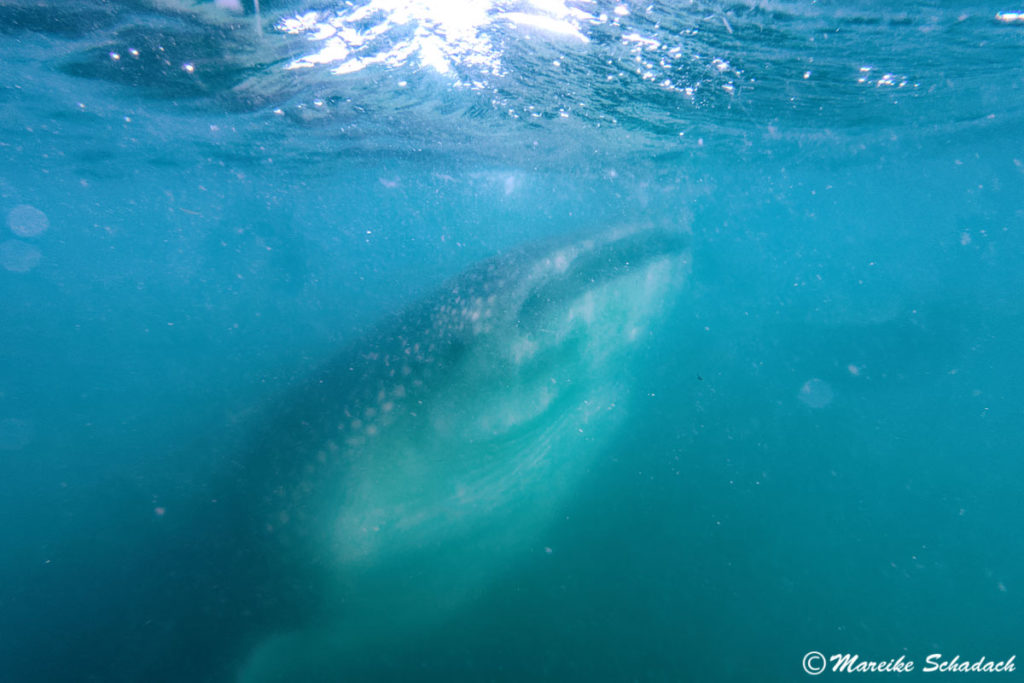
The Whale Shark - Whale or Shark?
As big as a whale, but still a shark. With an average body length of 12 meters, whale sharks are the largest fish in our seas. But it's not only the size that reminds us of a whale. Like many whales, the whale shark feeds on plankton. It can suck in up to 6,000 liters of water per hour. Instead of baleen whales, however, it uses a special sponge-like filter apparatus that is stretched in front of its gills. It also has about 3000 teeth, which are arranged in more than 300 rows close together. A fish of superlatives! And it is not only the largest fish with an unbelievable number of teeth, but also a real pachyderm: at 15 cm it has the thickest skin of all living creatures.
Whale sharks give birth to up to 300 living young. The young hatch from the eggs while they are still in the womb. The time of birth can be controlled by the female. The newborn whale sharks are only about 60 centimeters long.
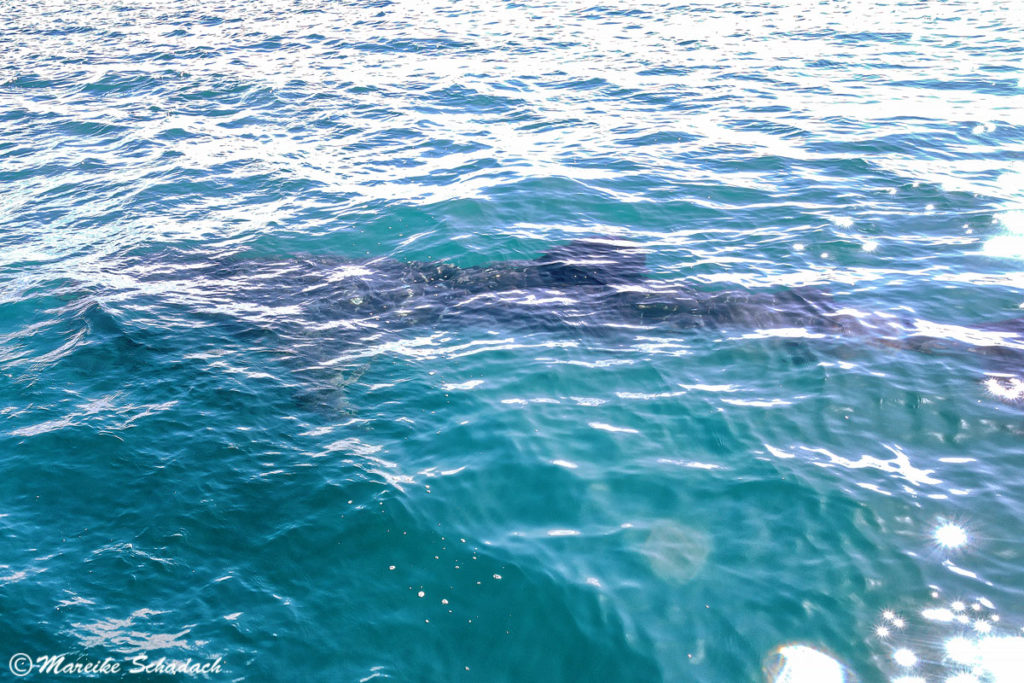
Facts about Whale Sharks::
Average length: about 12 meters
Maximum length: up to 20 meters up to 20 meters
Weight: up to 20 tons
Age: up to 100 years
Sexual maturity: between 10 and 30 years
Swimming speed: approx. 3-5 km/h
Food: plankton, microorganisms, small fish
Whale sharks are found in all tropical and subtropical seas with water temperatures between 21°C and 25°C. They are most commonly found where the water is rich in plankton, krill and fish larvae. They often follow seasonal fluctuations in food supply and can therefore only be observed at certain times in many places.
Endangerment and Protection of the Whale Sharks
Since 2016, the whale shark has been on the IUCN Red List. It is classified as endangered. Nevertheless, it is still hunted in many countries. Apart from fishing, oil drilling, aquaculture and shipping are the main threats. The whale sharks also frequently come to feed in the shallow coastal areas rich in plankton. There, however, they are particularly exposed to heavy shipping traffic. In addition, they are increasingly affected by marine pollution, especially plastic waste. This is because they filter it out of the water together with their food. But also unregulated and reckless tourism (excursion boats and snorkeling tours) can put the whale sharks under stress and endanger them.

The bay of La Paz is characterized by its abundance of fish and its biodiversity. Every year between October and April, the water here is also very rich in plankton and attracts whale sharks. Many tour operators have found a source of income in this area.
In addition, since 2003 there is a whale shark monitoring program in the bay of La Paz. It shows that it is mostly younger animals with 6 to 9 meters length that come here to feed. In 2019 a total of 105 different sharks were identified based on their unique pattern on their backs. However, data from recent years also show that up to 66% of the animals have injuries from boats.
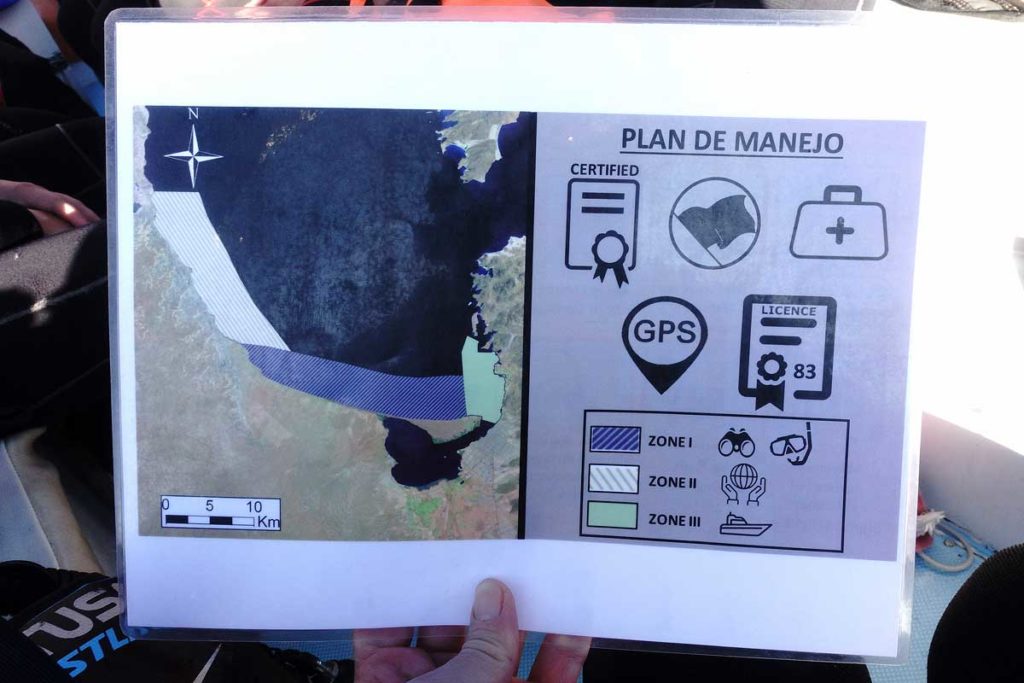
To protect the whale sharks, rules for whale shark tourism have been established and the tour operators have been trained since 2009. Finally, in 2018 a sanctuary for the whale sharks was established in the bay of La Paz.
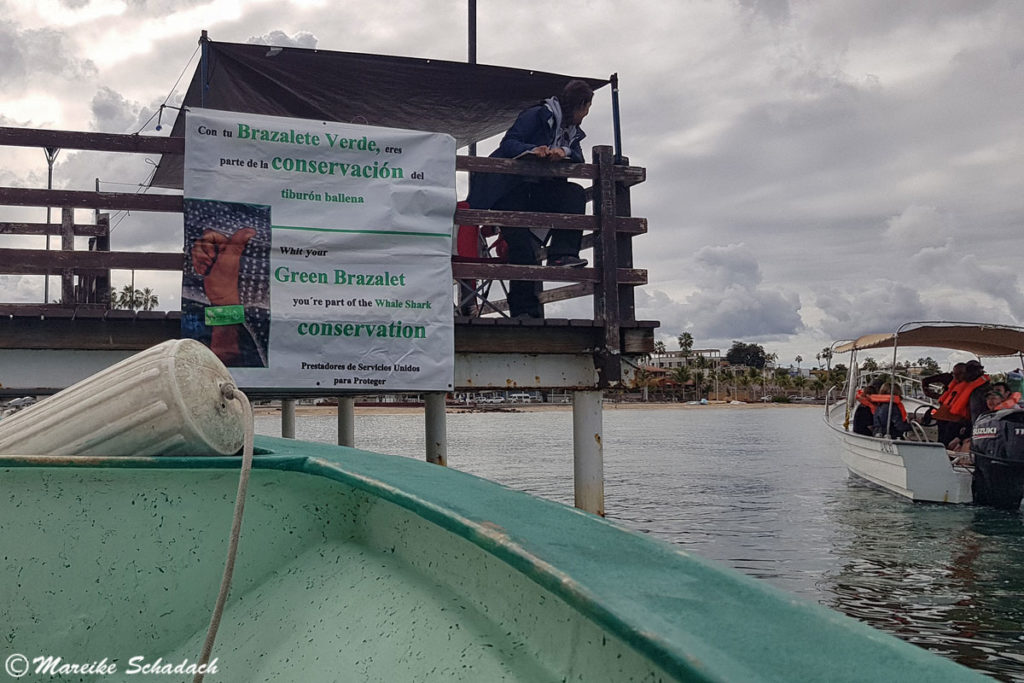
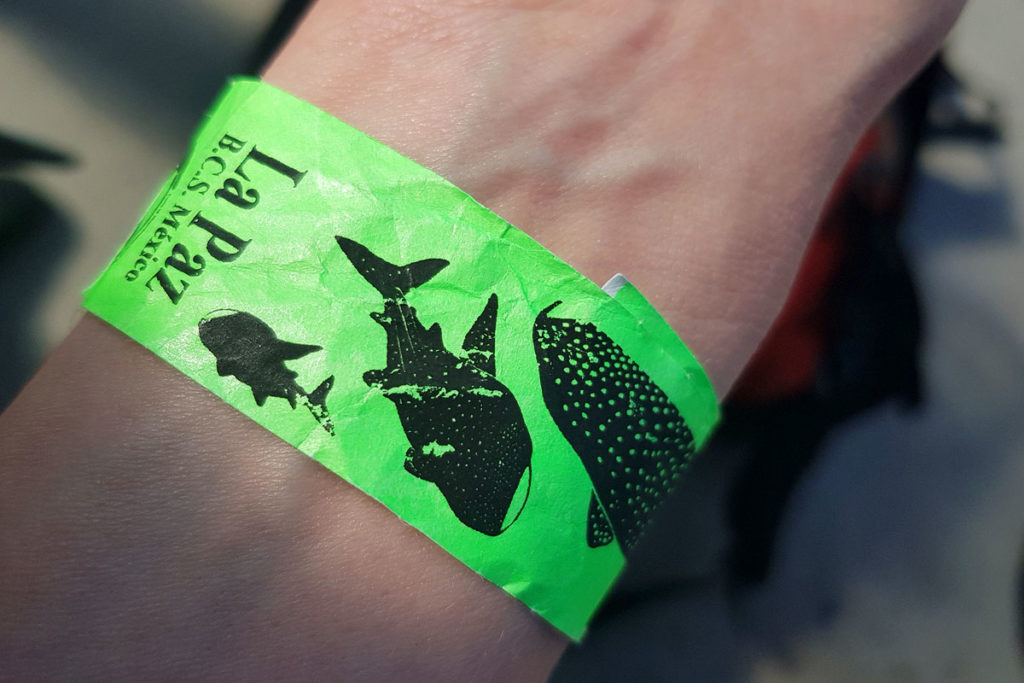
Snorkeling with Whale Sharks off La Paz - Overview and Tips
An underwater encounter with a whale shark is certainly one of the most exciting experiences one could wish for when snorkeling. Here I will tell you my tips for this unique nature experience:
- Season: 1 October to 30 April
- Water temperature: 26°C in October to 15°C in February
- Visibility range: 20 m to 10 m. The best visibility is in October and November.
- Costs: 70 to 100 US dollars. The national park fee (US$7) is included. For this you will get a green ribbon around your wrist.
- Duration: about 3 hours. Since only 14 boats are allowed in the reserve at the same time, there may be waiting times. Therefore, don't make any plans for the time after that. The boat trip to the reserve takes about 20 minutes. Meanwhile you have time to put on your wetsuit and prepare your equipment / camera.
- Snorkeling equipment can be rented. However, there are big differences: Some rent only thin wetsuits, others 7mm wetsuits.
- Most boats offer snacks and drinks . Take a refillable water bottle with you.
- A towel and something warm and windproof for the return trip .
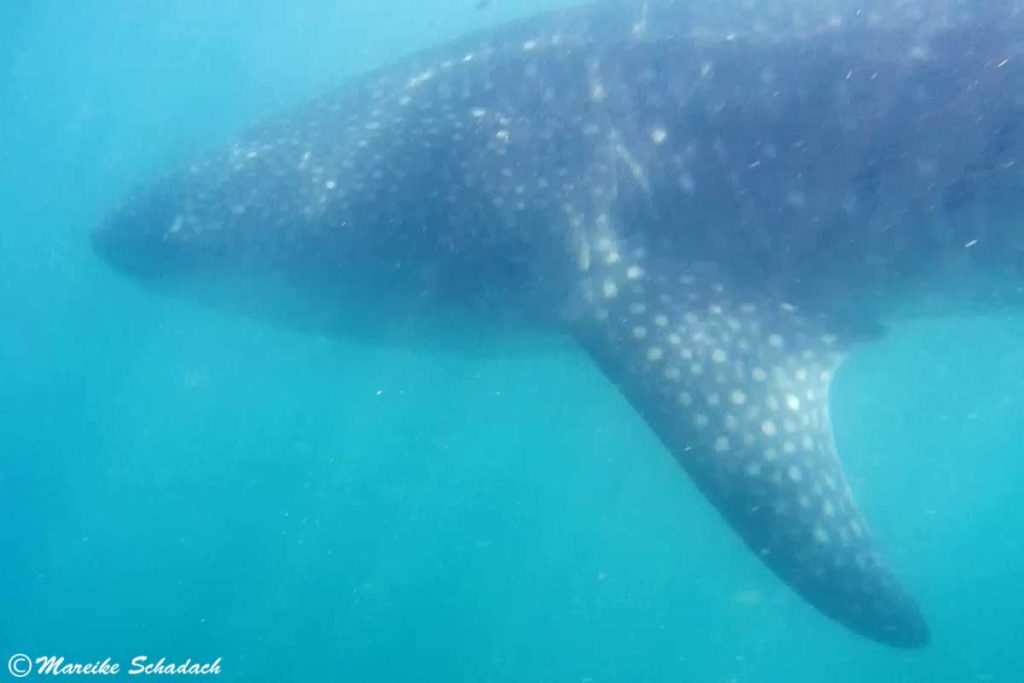
How to find a Tour Agency
Try to find out how big the group is before booking a tour. The smaller the group the better. Because the snorkelers are divided into groups of five people each. This can result in longer waiting times on board and fewer snorkeling trips. On my second snorkeling trip we were 17 people on board and were divided into 4 groups. Each group could only go in the water twice. On my first trip, however, we were only 8 people and were in the water five times.
Some agencys have combined tours in their program where you go to the sea lion colony afterwards . For example, with Dive in La Paz you can first snorkel with the whale sharks and then dive or snorkel with the sea lions (US$ 155; only whale sharks US$ 90).
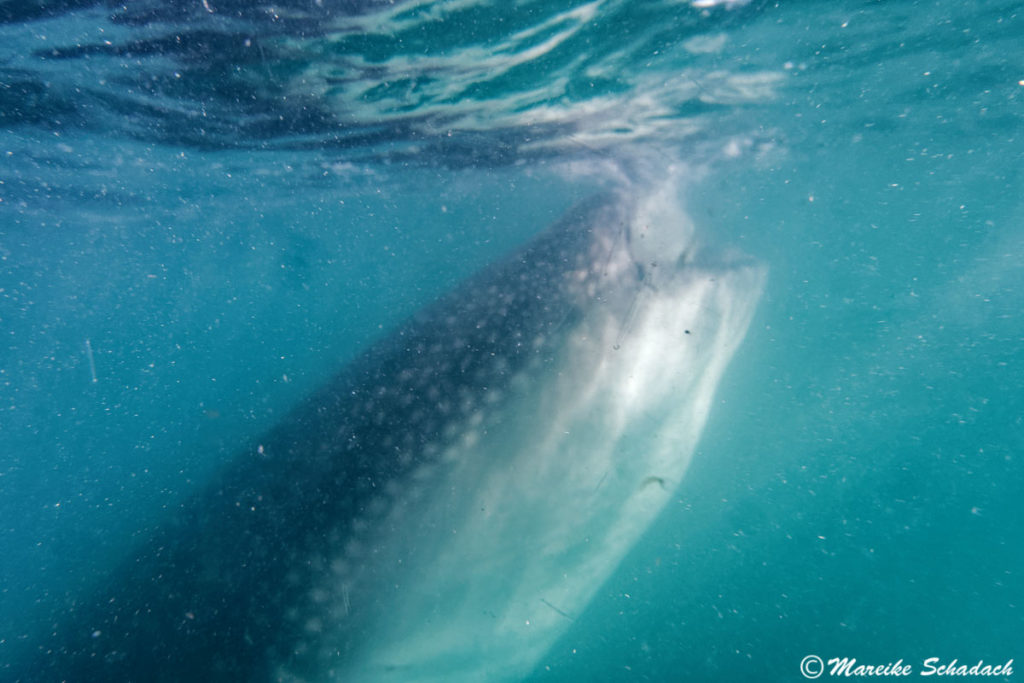
Very special excursions are offered by the research organization Whale Shark Mexico . Here you can actively support the monitoring of these fascinating animals as part of a “Citizen Science Programms” . All the data collected will help in the conservation and management of the whale sharks off La Paz. The research trips are conducted in small groups of up to 6 people and cost 90 US dollars.
Rules for Snorkeling with Whale Sharks off La Paz
The activities with the whale sharks off La Paz are strictly regulated and controlled. Because only with sustainable ecotourism can the population of whale sharks off La Paz remain stable in the future. Therefore, rules have also been established for snorkeling:

- Listen to your guide's instructions.
- Only snorkeling is allowed, no diving or free diving.
- Use reef friendly sunscreen, e.g. from Eco Cosmetics or Speik. You can find an interesting article about the reef-damaging effects of sunscreen at Indojunkie. Rashguards with UV protection are also a good alternative to sunscreen.
- Keep a distance of at least 2 metres and do not swim in front of the whale shark's mouth.
- Do not touch!
- Do not use flash or video light when taking pictures / filming.
- A maximum of one boat and five snorkelers + guide per whale shark is allowed. If you are travelling with a larger boat, you will be divided into several groups which will go into the water one after the other.
- A maximum of 14 boats are allowed in the reserve at any one time.
Other Places where you can see Whale Sharks
La Paz is not the only place in the world where you can snorkel with whale sharks. There are many more. Here is a selection:
| Where? | When? |
| Isla Holbox, Mexico | June to September |
| Utila, Honduras | March to April; September to December |
| Ningaloo Reef, Australia | Mid March to July |
| Gladden Spit, Belize | April to May |
| Donsol Bay, Philippines | November to June |
| Tofo, Mozambique | October to March |
| South Mahe, Seyshellen | August to November |
| Koh Tao, Thailand | April to June |
| South Ari Atoll, Maldives | all year round |
| Ghoubbet, Djibouti | End of October to February |
Book Recommendations for Mexico
You want to know where the journey goes? Then I can recommend these books* about Mexico.
You can order the books at Amazon by clicking on the pictures. If you buy a product through one of these affiliate links, I get a small commission and you help me to keep filling Fernweh-Motive with interesting articles. The product will not be more expensive for you and you do me a huge favor.
Have you ever been snorkeling with whale sharks? Where was that and how did you like it? Do you have any questions or tips for snorkeling with whale sharks off La Paz? If so, please write me a comment!
Do you want to know when there are new articles on my blog? Then follow me on Facebook, Pinterest or Instagram. I would also be very happy if you share my article with your friends.









